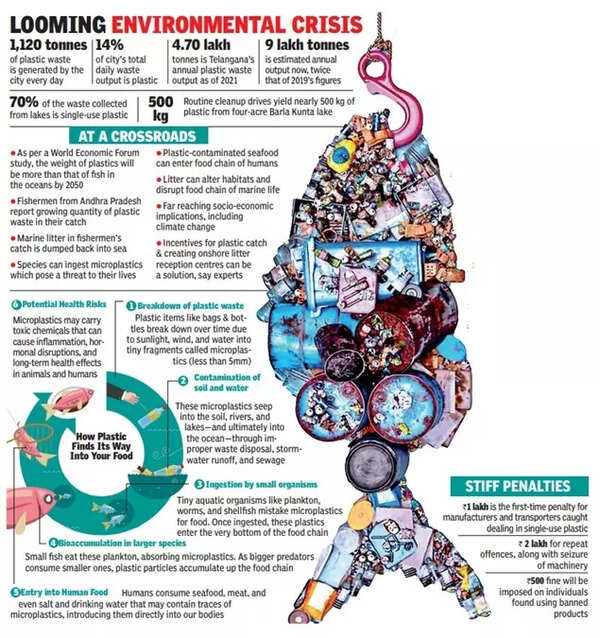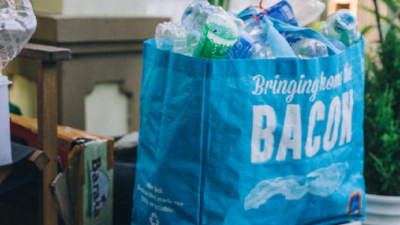Hyderabad drowning in plastic: Lakes choked, landfills overflowing | Hyderabad News

The city’s tryst with single-use plastic is now playing out in plain sight, spilling out of choked landfills and swirling across polluted lakes. According to the Greater Hyderabad Municipal Corporation (GHMC), the city generates 8,000 tonnes of waste each day of which over 14% is plastic.While this waste is spread across the city, only one dumping site in Jawaharnagar is processing it. According to an inspection report by the Telangana Pollution Control Board (TGPCB) presented before the National Green Tribunal, about 6,000 tonnes of waste is processed at this dumping site.

The Union environment ministry imposed a ban on 19 single-use plastic (SUP) items in July 2022, targeting those with low utility and high littering potential. But nearly two years later, the city’s streets and water bodies remain littered with banned products.In fact, in 2021 Telangana topped the charts in the Central Pollution Control Board’s (CPCB) report with an annual plastic waste output of 4.7 lakh tonnes. That’s more than double its 2019 figure of 1.83 lakh tonnes. While there’s no recent state-wise data, experts estimate that the numbers have nearly doubled since.“The volume of plastic waste we’re generating today is significantly higher than what we recorded four years ago. It’s a ticking environmental bomb,” said environmental scientist Babu Rao, who spent three decades researching on plastic-producing industries. “And this isn’t just about what we see floating in the water or lying on roads. These plastics leach toxic chemicals into soil and water as they degrade. They’re contaminating groundwater and harming aquatic life, eventually boomeranging back to humans.”Hyderabad’s lakes, many of which are undergoing restoration, are bearing the brunt. “Nearly 70% of the waste we collect from lakes is single-use plastic. Inlets and outlets of lakes are choked with years’ worth of plastic debris,” said AV Ranganath, commissioner of Hyderabad Disaster Response and Asset Protection Agency (HYDRAA).According to lake clean-up groups, the most common plastic items are wrappers, bottles, diapers, and condoms. “From just the four-acre Barla Kunta lake, in Gachibowli, we extracted five tonnes of plastic. Even routine drives pull out 200 to 500 kg each time. From 72 acres of Kotha Cheruvu, in Kokapet we collected 15 tonnes during the first phase of cleaning and this data is from drives held only this year,” said Madhulika Chaudhary of Dhruvansh Foundation that regularly conducts clean-up drives at city lakes. She added: “We need stringent enforcement of the plastic ban, better waste segregation at source, and decentralised processing systems to reduce the load on municipal infrastructure.”
















